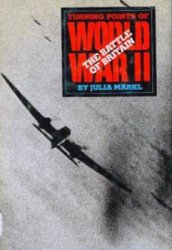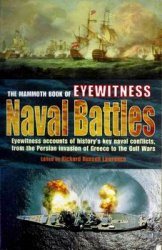This privately owned carrier is formed at Santo Domingo in 1979 to offer scheduled passenger and cargo flights, plus charters. A Douglas DC-6A, a DC-8-43, and a Boeing 720-022B are acquired and regular flights to Puerto Plata, Miami, and New York are initiated.
A frequency is launched to Port-au-Prince (Haiti) in 1980. Because of increasing fuel prices and a downturn in the world economy, the carrier’s services and finances begin to deteriorate in 1981.
While on a ferry flight, the B-720B with five crew is destroyed as the result of a bad landing at Miami on December 16; there are no fatalities.
In 1983, flights to the U. S. are suspended and the single route to Haiti will prove insufficient to generate required revenues. Still, service is continued.
While en route over the Gulf of Mexico on July 20, 1988, the DC-6A, with three crew suffers fuel exhaustion to three of its four engines. Permission is received to make an emergency landing; however, the aircraft crashes into a drainage canal at Golden Meadow, Louisiana, killing the three flyers. The company shuts its doors shortly thereafter.
HISPANOLA AIRWAYS: P. O. Box 524211, Miami, Florida, 33138, United States; Phone (305) 591-1704; Fax (305) 591-1706; Code ZS; Year Founded 1996. Hispanola is established at Miami (MIA) in 1996 to resume the work abandoned by Hispanola Airways, S. A. almost a decade earlier. President/CEO Jacques Bernateau recruits a workforce of 25 and serves markets in the Dominican Republic with leased Boeing 727F freighters, which fly both to Miami and to New York (JFK).
HOGAN AIR: 1707 Run Way, Middleton, Ohio, 45042, United States; Phone (513) 422-3737; Fax (513) 422-1494; Year Founded 1993. Terry Hogan forms his all-cargo airline at Middleton, Ohio, in 1993 to provide regional services on behalf of other express-cargo operators and freight forwarders. Revenue operations commence and continue with a fleet that includes 3 Beech 18s, 5 Douglas DC-3s, 2 Piper PA-23 Aztecs, and 2 Gates Learjets.
Operations continue.
HOKKAIDO AIR SYSTEM COMPANY, LTD.: Sapporo-Shi, Shi-nashi-Ku, Hokkadama-Cho Airport, Sapporo, 063, Japan; Phone 81 (11) 7811247; Fax 81 (11) 7841716; Code HAS; Year Founded 1998.
HAS is established at the beginning of 1998 as a joint venture between Japan Air System Company, Ltd. (51%) and the Hokkaido prefectural government (49%). Takeshi Kandi is named president and revenue operations begin with a pair of leased SAAB 340Bs.
Fights continue during the remainder of the decade. The fleet is enhanced by the addition of a third leased SAAB 340B and destinations visited include Asahikawa, Hakodate, Kushiro, and Sapporo.
HOKKAIDO INTERNATIONAL AIRLINES COMPANY, LTD. (“AIR DO”): Cargo Center Building, 4F, 2-6 Haneda Airport, 3 Chome, Ota Ku, Tokyo, 144-0041, Japan; Phone 81 (3) 5757 4901; Fax 81 (3) 5757 4918; Http://www. hac-air. co. jp; Code HD; Year Founded 1996. This Sapporo-based new entrant is established in November 1996 with initial capitalization of ?3.58 billion. When it finally begins flying over two years later under its two names, it will be only the second airline to begin service in Japan in 35 years.
The brainchild of a successful poultry farming business on the northern home island of Hokkaido, the start-up, with Teruo Hamada as president, will take advantage of the new era of deregulation being fostered in Japan by the Ministry of Transport.
Over 100 local individuals and concerns invest in the carrier during the first half of 1997. A business plan is developed, based on a paper by Prof. Tadahisa Wada of Seishu Women’s University in Sapporo, which projects the city’s new Chitose Airport as a new international hub for northern Japan.
On November 6, the start-up carrier signs an agreement with Japan Air Lines Company, Ltd. (2). JAL will provide operational, technical, and airport handling support and assist the carrier as it seeks Ministry of Transport operating and route authority and can launch Japanese domestic service, hopefully in July.
The economic situation and the recession on Hokkaido bring a slowdown in the effort to launch Air Do. Still, plans are afoot in the spring of 1998 to lease a B-767-33AER from Ansett Worldwide Aviation, Ltd. and to achieve certification in September. The start-up date is changed to October 30.
After a long gestation period, Hokkaido International is finally able to launch service on December 20. Employing the chartered B-767-33AER, the JAL-backed new entrant begins thrice-daily roundtrips from Tokyo (HND) to Shin-Chitose Airport near Sapporo. The inaugural one-way service is fully booked with 286 passengers, each of whom pay ?16,000 ($138) for their tickets (or about 36% less than regular fares on the same route offered by the Big Three Japanese airlines).
HIA is the second discount airline to launch service in Japan since September when Skymark Airlines Company, Ltd. took to the air. During the remainder of the fall, the company makes plans to raise an additional ?1.5 billion in capitalization.
Although traffic figures are unavailable, the company has brought in revenues of $16.66 million and has expenses of $21.66 million. The operating loss is $5 million.
On January 24, 1999, it is revealed that Air Do has approached Kyocera in an effort to gain ?500 million of the new funding it seeks. Kyocera, which is receptive to a proposal, already has ?3 million invested in the airline.
All Nippon Airways Company, Ltd. and Japan Air Lines Company, Ltd. (2) respond to the challenge posed by the discount carriers by slashing their fares by up to 50% in early February. By April, Air Do’s load factor has been cut to 65%.
On May 5, company officials inform the Dow Jones Newswires that HIA will begin performing its own maintenance and will add another aircraft in early 2000.
Once again, traffic figures are not released. The year’s pretax and net losses total approximately ? 2 billion.
Facing stiff competition and significant financial problems throughout 2000, Air Do takes the controversial step on December 1 of revoking a ban it had earlier placed on in-flight smoking. A company official notes that the island of Hokkaido has the highest smoking rate in Japan and in a bid to attract some of those passengers, the company is now allocating smokers one quarter of all seats on its flights from Sapporo to Tokyo (HND).
The airline is flooded with complaints from antismoking groups and announces that it will review how big an economic boost the smoking seats make before making a decision on whether or not to continue. During the month, approximately 20% of the company’s passengers will request a smoking seat
The new smoking policy is not the only change needed; the carrier, facing bankruptcy, must obtain a government loan. Although the politicians are willing, the investment is contingent upon a matching grant from business leaders, who are unwilling to extend themselves for the loss-making airline. Progress in obtaining this funding is slowed after the death of the airline’s president. As late as December 10, no replacement has been chosen, but that decision will be taken as the end of the year approaches.
Beginning on November 30, Hokkaido is unable to pay its user fees at New Chitose and Tokyo (HND); the bill will amount to ? 300 million by mid-January.
On December 15, word is received that the carrier will be given a ? 1-billion loan by the Hokkaido business community if it continues drastic cost-cutting steps. After several candidates turn the post down, government official Michimasu Ishiko is named president on December 27.
At a New Year’s Eve party, the president-designate, a reformed smoker, indicates that he may soon quash the in-flight smoking policy, indicating that his carrier cannot go against the “nonsmoking trend.”
HOLD TRADE AIR SERVICES, LTD.: PMB 2346, 6A Sokoto Road, Ahmadu Bello Way, Kaduna, Nigeria; Phone 234 (62) 215 405; Fax 234 (62) 215 368; Code H2D; Year Founded 1991. HTAS is established at Lagos in early summer 1991 to provide regional scheduled services. Revenue operations commence on August 1 with four British Aerospace (BAC) 1-11-208ALs and a Douglas DC-8-61.
One of the BACs, with 72 passengers, is involved in an accident at Kaduna on August 29, 1992; although no injuries are reported, the badly damaged aircraft must be withdrawn.
Operations continue apace in 1993-1994; however, CEO Zakari Hamura is forced to withdraw a second BAC when the capacity of three machines proves not to be required.
The aircraft is returned to service in 1995-2000. By the latter year, airline employment stands at 150 and destinations visited from Lagos include Kaduna, Kano, Maiduguri, and Yola.




 World History
World History









